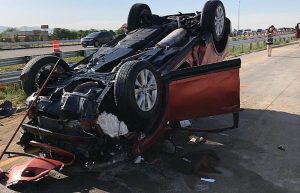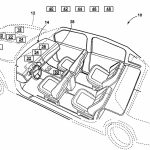An examination of some of the top songs downloaded on Spotify shows a correlation between aggressive music and aggressive driving. In short, if you’re a fan of the heavy metal anthems so many of us use to put a charge in our day, you may want to avoid listening to them during your daily commute — for your safety and ours.
There are a variety factors that play a role in creating dangerous driving on the road: warn tires, soft brakes, drowsy drivers, and everyone’s favorite: distracted driving. However, one we’ve all been exposed to more often than necessary is the aggressive driver.
Sometimes the chance-taking, hostile and antagonistic road-rager in waiting is that way because they’re late and the roads are more congested than usual. Other times, there are environmental factors that can lead to aggression behind the wheel, which endangers others.
Music, man
Recent transportation safety studies reveal that 75% of the time drivers spend behind the wheel, they listen to music.

What kind of music you listen to may have a direct impact on what kind of driver you are at that moment.
And while they claim music calms the savage beast, it can also turn him or her into a snarling, overly risky menace behind the wheel.
According to a systematic review and meta-analysis published in Health Promotion Perspectives, specific types of music can significantly impact driving behavior through both physiological and psychological effects.
Many of today’s most-streamed tracks could potentially increase accident risk, with research showing that high-tempo and high-volume music can increase average driving speed and affect response times, studies show.
More Consumer Stories
- Consumers Showing a Bit More Confidence in Self-Driving Vehicles
- Automotive Brands Expanding Owner Loyalty Numbers in 2024
- New Study Finds Tesla the “Most American-Made” Brand — But Foreign Marques Dominate
What to avoid
One only needs to examine anecdotal evidence to see how music plays a role in mood and performance. Athletes wearing headphones before they take the field aren’t listening to Minnie Ripperton’s “Loving You” or anything from Luther Vandross as motivation to run through a 300-pound tackle or set a new world record in the 50-meter freestyle.
The legal team at DJC Law in Texas compiled a list of the top examples of songs downloaded on Spotify that could lead to more aggressive driving and more crashes (and perhaps more business for them).
- “Highway to Hell” — AC/DC Spotify Streams: 1.2 billion. The aggressive guitar riffs, pounding drums, and high-tempo rhythm naturally elevate heart rate and adrenaline levels while driving. The intense energy can unconsciously influence driving speed and aggressive behavior patterns.
- “Thunderstruck” — AC/DC Spotify Streams: 1.5 billion. The building intensity and fast-paced instrumental sections create a surge of energy that can affect concentration and lead to more aggressive acceleration patterns, particularly during the iconic guitar sequences.
- “Enter Sandman” — Metallica Spotify Streams: 1.3 billion. Heavy metal riffs combined with powerful drums can trigger an alertness response, potentially leading to more aggressive driving behaviors. The intense chorus sections may influence faster driving speeds.
- “Welcome to the Jungle” — Guns N’ Roses Spotify Streams: 1.8 billion. The track’s escalating intensity and aggressive instrumentation can increase adrenaline levels, potentially leading to more assertive driving patterns and decreased attention to speed limits.
- “Paradise City” — Guns N’ Roses Spotify Streams: 1.4 billion. The song’s building energy and fast-paced sections can create an exciting state that may influence driving behavior, particularly during the high-tempo chorus and guitar solos.
- “Du Hast” — Rammstein Spotify Streams: 950 million. The industrial metal beat and intense rhythmic patterns can create a heightened state of arousal, potentially affecting concentration and driving intensity.

Sometimes the chance-taking, hostile and antagonistic road-rager in waiting is that way because of what’s on the radio.
What does it all mean?
High-energy rock and metal songs share common characteristics that can affect driving behavior: intense rhythms, aggressive instrumentation, and escalating energy levels.
These elements can naturally increase heart rate, adrenaline levels, and arousal states — all factors that may influence driving decisions and reactions. While enjoying music is part of the driving experience, being aware of how high-energy songs might affect behavior is crucial for maintaining safe driving practices.
Of course, listening to lullabies or a collection of ’80s love songs might create a different type of dangerous driving.







0 Comments